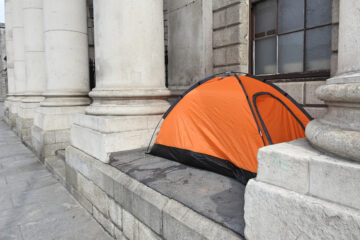“Nearly 60 years after the U.S. Supreme Court established a key First Amendment precedent protecting protesters’ rights, the freedom to assemble and the right to protest have once again been called into question.
On March 2, 1961, a young James Clyburn and nearly 200 other young African Americans marched from Zion Baptist Church in Columbia, South Carolina, to the statehouse grounds, protesting segregation.
Their own peaceful protests led to arrests for breach of the peace. Ultimately, the U.S. Supreme Court vindicated Clyburn, who is now the U.S. House majority whip, and other activists in Edwards v. South Carolina (1963), ruling the First Amendment protected the right to peaceful protests.
“I wore that arrest like a badge of honor,” Clyburn says. “But I see many similarities between the protests in the ’60s and the social justice protests of today.
“Now, there are attempts to silence protesters again,” Clyburn adds, referring to an array of new measures that ostensibly seek to mute the voices of protesters or at least reduce their impact.
Social activism has escalated in recent years with the growth of women’s marches after the election of President Donald Trump, the Black Lives Matter movement, and in reaction to mass shootings and the deaths of African Americans at the hands of law enforcement officials.
Legislators who are now seeking to restrict protesters say the measures are necessary to establish law and order; provide security; protect businesses; ensure the free flow of highways; and distinguish between peaceful protesters and rioters. But free speech experts warn that the legislative trend against protesting is harmful to fundamental First Amendment freedoms.”
This article was originally posted in the ABA Journal.
To read the rest of the article click here.


